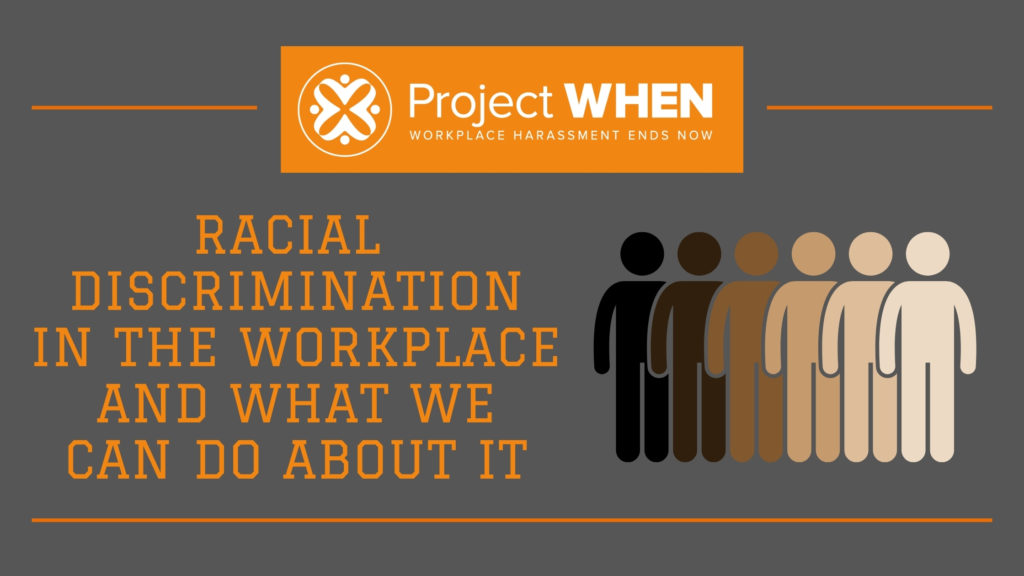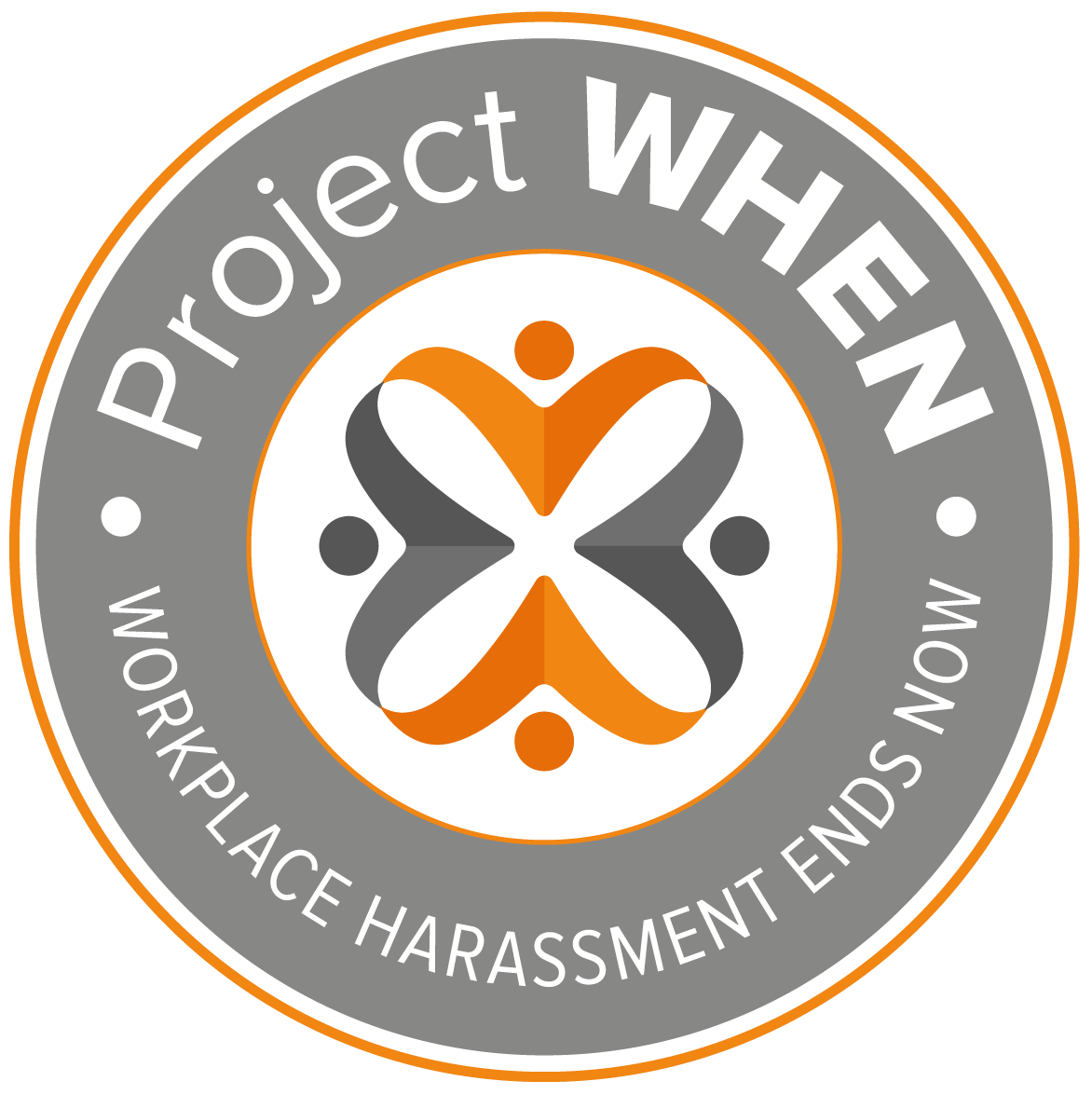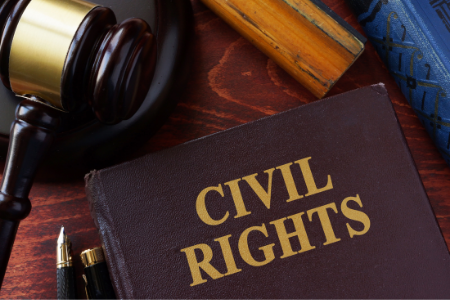Racial discrimination in the workplace: How companies can prevent it and what employees can do if it happens

Awareness against racial discrimination
 Are you a victim of racial discrimination or have you observed it happening in your workplace? Let’s explore some facts that you should know in order to handle it.
Are you a victim of racial discrimination or have you observed it happening in your workplace? Let’s explore some facts that you should know in order to handle it.
Our mission at Project WHEN (Workplace Harassment Ends Now) is to elevate awareness to eliminate harassment and create more respectful workplaces. This post on race and color discrimination is part of our series of pages educating the public about various types of workplace harassment, how employers can prevent it, and employees’ rights under the law.
What is race/color discrimination in the workplace?
Race and color discrimination are often perceived to be similar but there are certain distinctions between these two types of employment discrimination.
 Racial discrimination happens when an applicant or employee is treated unfairly because of actual or perceived race and racial traits (hair texture, facial features, and even skin color). Color discrimination involves receiving unfair treatment because of one’s color, complexion, and skin shade or tone.
Racial discrimination happens when an applicant or employee is treated unfairly because of actual or perceived race and racial traits (hair texture, facial features, and even skin color). Color discrimination involves receiving unfair treatment because of one’s color, complexion, and skin shade or tone.
Both types of discrimination can also occur because of association (marriage or relation) with someone of a particular race/color and between people of the same or different race/color.
In this post, we’ll touch on real examples of race and color discrimination, the laws offering protection from it, and the recourse victims have under the law. Importantly, we’ll also cover what employers can do to prevent it from occurring in the workplace, along with delving into what companies should do to address race/color discrimination claims. You’ll also find a number of resources we feel are helpful for those dealing with this problem.
Examples of race and color discrimination
Race and color discrimination has many types, one of which is same race discrimination. In 2006, the EEOC handled a case against a Dallas-based HIV service agency. The company violated Title VII of the Civil Rights Act when its African American founder and former Executive Director harassed four employees who are also black. These employees were allegedly subjected to graphic language, racial slurs and pejorative insults. To settle the case, the agency paid a total of $200,000 to the aggrieved individuals.
Race/color discrimination can also be associational. Take the case against a family owned restaurant as an example. In 2011, the EEOC filed a case against this restaurant for firing a Caucasian employee because of her association with an African-American employee who was also discharged due to his race. The customers and the restaurant’s co-owner allegedly referred to the African-American employee by the “N-word” and called the Caucasian employee “N-lover” for turning down date invitations from customers. The employer was also made liable for failing to post any information about federal laws against discrimination.
These are just some of the different manifestations of racial discrimination in the workplace. Other types include code words, color, reverse, intersectional, and biracial discrimination. For more cases illustrating these types, head over to this EEOC page.
Statistics on race and color discrimination
The EEOC receives thousands of discrimination charges alleging race and color discrimination every fiscal year. Race discrimination receipts reached 8,682 in 2019, slightly increasing by 1.75% compared to 2018. Color discrimination filings also had a notable increase in 2019 after reaching 3,415, which is the highest record within the last ten years.
Race and color discrimination is undeniably still a large issue in work environments everywhere. Employers may think that their actions do not have serious consequences and victims may not have a clear understanding of protections available to them. Awareness is of utmost importance, first and foremost, in these situations. Read on to explore which laws protect you from it, as well as key actions to take by both companies and victims in dealing with racial discrimination in the workplace.
Race and color discrimination laws
Federal law
 The EEOC enforces Title VII of the Civil Rights Act of 1964 which is a federal law that prohibits employment discrimination on the basis of race, color, sex, national origin, and religion. Under this Act, employers may not treat individuals less favorably in employment aspects (such as hiring, firing, pay, promotion, job training/assignment, benefits, and other work conditions) because of their perceived or actual race/color, as well as association with someone of a certain race.
The EEOC enforces Title VII of the Civil Rights Act of 1964 which is a federal law that prohibits employment discrimination on the basis of race, color, sex, national origin, and religion. Under this Act, employers may not treat individuals less favorably in employment aspects (such as hiring, firing, pay, promotion, job training/assignment, benefits, and other work conditions) because of their perceived or actual race/color, as well as association with someone of a certain race.
It is illegal to base employment actions on physical traits commonly associated with a particular race or stereotypical perceptions about the qualities, abilities, performance, and competence of a particular race. Additionally, a workplace policy or condition that may seem neutral but negatively affects a particular racial group may be considered unlawful, especially if it is not fundamental for business operations.
Title VII also protects individuals from being harassed because of their race and color. Harassment in this context can take the form of humiliation, derogatory remarks, offensive drawings/illustrations, and unwelcome physical conduct.
It is important to note, however, that one-off teasing and isolated incidents (unless extremely serious) may not be considered illegal. The unwanted behavior must create a threatening and hostile work environment or result in adverse employment action to be unlawful. Harassment can occur between an employee and a supervisor, manager, coworker, and a non-employee (clients or vendors). The harasser can also be of the same race/color as the victim.
Another main provision this law offers is protection against retaliation. An employer may not punish or retaliate against an individual who is actively asserting his/her rights. Protected activities include filing a discrimination charge, using complaint processes to oppose discriminatory practices, and participating in legal proceedings or investigations alleging workplace harassment.
The law applies to business/private employers with 15 or more employees, employment agencies, state or local governments, federal government agencies, and labor organizations or joint apprenticeship committees. The law’s protection extends to all applicants and employees of covered entities.
Below is an excerpt from Title VII of the Civil Rights Act of 1964 pertaining to race and color discrimination.
|
Title VII of the Civil Rights Act of 1964 DISCRIMINATION BECAUSE OF RACE, COLOR, RELIGION, SEX, OR NATIONAL ORIGIN SEC. 703. (a) It shall be an unlawful employment practice for an employer– (1) to fail or refuse to hire or to discharge any individual, or otherwise to discriminate against any individual with respect to his compensation, terms, conditions, or privileges of employment, because of such individual’s race, color, religion, sex, or national origin; or (2) to limit, segregate, or classify his employees in any way which would deprive or tend to deprive any individual of employment opportunities or otherwise adversely affect his status as an employee, because of such individual’s race, color, religion, sex, or national origin. (b) It shall be an unlawful employment practice for an employment agency to fail or refuse to refer for employment, or otherwise to discriminate against, any individual because of his race, color, religion, sex, or national origin, or to classify or refer for employment any individual on the basis of his race, color, religion, sex, or national origin. (c) It shall be an unlawful employment practice for a labor organization– (1) to exclude or to expel from its membership, or otherwise to discriminate against, any individual because of his race, color, religion, sex, or national origin; (2) to limit, segregate, or classify its membership, or to classify or fail or refuse to refer for employment any individual, in any way which would deprive or tend to deprive any individual of employment opportunities, or would limit such employment opportunities or otherwise adversely affect his status as an employee or as an applicant for employment, because of such individual’s race, color, religion, sex, or national origin; or (3) to cause or attempt to cause an employer to discriminate against an individual in violation of this section. (d) It shall be an unlawful employment practice for any employer, labor organization, or joint labor-management committee controlling apprenticeship or other training or retraining, including on-the-job training programs to discriminate against any individual because of his race, color, religion, sex, or national origin in admission to, or employment in, any program established to provide apprenticeship or other training. |
State Law
Some states have laws that protect individuals from race and color discrimination. The best way to learn more about additional protections you can receive locally is to refer to your state’s department of labor website. Our guide on reporting incidents of workplace harassment links to each state’s DOL website, as well as some of the regional and city organizations, for those in more populous areas.
Recourse for victims of racial discrimination
Victims of racial discrimination in the workplace have the right to seek legal recourse. If you have already reported it to your company’s HR and you are not seeing any signs of moving forward, you have the option to consult legal counsel or an employment lawyer. These professionals can help you evaluate the case and provide valuable advice regarding your claims.
A best next step could also be filing a charge either through your state administrative agency or the EEOC, a federal agency that enforces federal laws related to harassment and discrimination in the workplace. Acting promptly is important since victims have 180 days to file a charge with the EEOC while federal employees have 45 days to contact an EEO Counselor.
Importantly, you are not required to speak with an attorney before approaching a government agency to discuss your situation; these entities are in place to protect your rights as an employee and are typically willing to give guidance on suggested next steps for you as a victim.
To know about the process of reporting racial discrimination cases, refer to our full guide on How to Report Workplace Harassment Incidents. This article provides a comprehensive list of state resources and local EEOC offices. You can also head directly to the EEOC’s page on How to File a Charge of Employment Discrimination.
What can companies do to prevent race and color discrimination?
Companies have the responsibility to prevent discrimination and retaliation from transpiring in the workplace. With the right mix of properly enforced policies and a holistic examination of business processes and culture, developing a respectful work environment is a possibility for any organization.
If you are passionate about ensuring the safety of employees from the different manifestations of discrimination, consider getting your company involved with Project WHEN (Workplace Harassment Ends Now).
As a first step, we’d ask you to sign our Pledge of Commitment to demonstrate your commitment to creating a respectful, harassment-free workplace for your employees.
For a holistic and structured approach to living out your commitment, we would encourage you to enroll in the WHEN™ Organizational Certification program. In this program, we will guide you through a step-by-step process of preventing all types of workplace harassment. This certification will also serve as a powerful statement to both internal and external audiences about your commitment to making your workplace a safe space for everyone. The Employee Culture Pulse Survey, which is also offered as a standalone service, will be administered to employees in the first phase of this program. The actionable data gained from this survey will allow you to identify challenges in your fight against workplace harassment and strategize your path to improvement.
What should companies do when race and color discrimination happens?
 Acts of discrimination happen when companies lack understanding of requirements set forth by the law and do not implement preventive measures. When tell-tale signs of hostility are observed within the organization, it is time to start dismantling it by engaging in meaningful conversations and breaking the status quo.
Acts of discrimination happen when companies lack understanding of requirements set forth by the law and do not implement preventive measures. When tell-tale signs of hostility are observed within the organization, it is time to start dismantling it by engaging in meaningful conversations and breaking the status quo.
If you are ready to begin discussions on creating a more respectful work environment, we can facilitate a Project WHEN Roundtable. This event can help attendees identify challenges present in their current working conditions and gain insight on the best action steps to eliminate traces of discrimination in the workplace.
If you are an individual who thinks that it is time to see change happening in your company, let your employer know about this and ask for a facilitated discussion to take place.
Remember, the problem of racial discrimination in the workplace will not solve itself. It is important for everyone to develop heightened awareness of what they can do to make a difference. Change will only take place if people within the workplace take the initiative to address issues, no matter how uncomfortable it may be.
Additional resources and recommended readings
For more information about race/color discrimination, we’ve rounded up some resources that you can consult and find below.
- Race/Color Discrimination | U.S. Equal Employment Opportunity Commission
- Facts About Race/Color Discrimination
- Questions and Answers about Race and Color Discrimination in Employment
- Race/Color Discrimination – Example
- Race/Color Discrimination – Your Rights
End race/color discrimination now
Nobody should have to face race and color discrimination or any form of harassment, for that matter. Project WHEN is a 501(c)(3) nonprofit organization working hard to make workplaces more respectful for everyone. Elevating awareness to prevent workplace harassment from taking place is what runs at the core of our organization.
Whether you’d like to make a financial contribution to support our work, sign the Project WHEN Pledge of Commitment, have your employer host a Project WHEN event, or just join our mailing list to learn of volunteer opportunities, everyone can get involved with Project WHEN!
Examples of Racial Discrimination in Various Industries
Racial Discrimination is a prevalent issue that happens in different workplace settings. Here are some examples of the racial discrimination issues the workplace is currently facing:
Racism at The Dickens Fair – 12/07/2021
The Dickens Fair is facing backlash and a boycott after allegations of sexual harassment and a history of racism. Former member of the singing group, Gin Alley Sallys, Jennifer Damico alleges inappropriate touching, groping, and harassment by members. The organizers of the annual event say recent allegations are simply not true.
Racism at Amazon Web Services – 11/16/2021
Lawsuits filed against Amazon Web Services show a sexist, racist, and homophobic workplace environment. AWS employees signed an internal petition calling for an independent probe of the company. In response, AWS CEO Adam Selipsky affirmed to the petition’s authors that the company will conduct an investigation using outside counsel.
Racism Against Phoenix Suns Owner – 10/22/2021
According to an ESPN-published report, Phoenix Suns owner Robert Sarver has been accused of sexual harassment, misogyny, and racism. Sarver denied or disputed most of the allegations through his legal team. The NBA announced that it will launch a thorough inquiry on the allegations.
Racism at Cascade Investments – 10/18/2021
Michal Larson, Bill Gates’ wealth manager, allegedly harassed his employees. Some employees claim he showed nude images of women on the internet and made multiple sexually inappropriate comments to female colleagues. He also insulted a Black employee and retaliated against his employees. Larson denied the allegations.
Racism at John Jay College of Criminal Justice – 10/2/2021
Carlton Jama Adams, an associate professor at John Jay College of Criminal Justice, has been charged with sexually harassing Judith Sandrine Dikambi, a graduate student. Dikambi claims in court documents that Adams subjected her to an “ongoing barrage of xenophobic, sexist, and vulgar remarks about her African ancestry.” The lawsuit against Adams is still ongoing.
Racist Social Media Posts by Oakland Police Officers – 9/20/2021
An investigation by Oakland Police Department found that several police officers are guilty of posting racist memes and jokes about rape and police brutality on social media. 140 Oakland Police Department phones were confiscated and nine officers were placed on an unpaid suspension following the investigation.
Racism at Yik Yak – 9/3/2021
Yik Yak, a controversial social networking app that focuses on anonymous, local contributions, announced its return on August 16. Yik Yak has been banned from several locations because of its racist and sexually harassing remarks and posts, which are made anonymously. This social media app has been prohibited at some schools, causing its popularity and value to drop.
Racism by a Former Command Chief – 8/11/2021
In 2019, Chief Master Sgt. Jason Morehouse became the subject of allegations of sexual harassment, racist remarks, and discriminatory behavior against his executive assistant. He was fired from his position in October that same year, only to be transferred to another leadership post at another base.
Racism, and Misogyny within CBS’ Stations Group – 7/22/2021
Misconduct, racism, and misogyny allegedly reigned at a handful of CBS-owned stations, according to a Los Angeles Times investigation. After this report, CBS fired two senior managers in its Los Angeles and Chicago stations. CBS did not reveal the reasons behind the managers’ departures but it signified a dramatic management makeover in the network’s stations.
Racism on the set of “The Doctors” – 7/20/2021
Dr. Ian Smith, former host of the medical talk show “The Doctors,” has filed a lawsuit against distributor ViacomCBS, production company Stage 29 Productions, firm head, and the show’s executive producer. Dr. Smith alleges that he was sexually harassed by the executive producer and that African-American hosts were subjected to discrimination.
Racial Discrimination by a California Treasurer – 7/20/2021
California State Treasurer Fiona Ma has been accused by Judith Blackwell, former executive director of the California Tax Credit Allocation Committee, of sexual harassment and wrongful termination. Blackwell filed a lawsuit against Ma alleging that she was unfairly fired after refusing Ma’s sexual advances. The suit also alleges that Ma subjected Blackwell to race discrimination, disability discrimination, and intentional infliction of emotional distress.
Racism at Olive Garden – 7/20/2021
Hannah Shaber, the lead organizer in New York for One Fair Wage, has filed a lawsuit against the parent company of Olive Garden alleging that the company’s subminimum wage policy is a violation of the Civil Rights Act. Shaber further shares that the tipping system is the manifestation of subminimum wage and promotes sexual harassment and racial inequity.
Racial Discrimination by a Kirtland Police Chief 7/18/2021
As a result of a three-month investigation, Kirtland Police Chief Lance Nosse received a letter accusing him of malfeasance, misconduct in office, gross neglect of duty, habitual drunkenness, and ethnic, racial and sexual harassment. A hearing to discuss his termination is underway.
Racism and Bias at Google – 07/16/2021
Amr Awadallah, Google Cloud’s vice president of developer relations, resigned following the publication of a LinkedIn manifesto on Israeli-Palestinian relations and his fiercely antisemitic history. Google, like other technology companies, has seen an increase in internal conflict in recent years. Employees have responded to allegations of prejudice and sexual harassment.
Race Discrimination at Netflix – 7/14/2021
Netflix is facing a lawsuit alleging gender and race discrimination in the workplace. The suit has been filed by a former director in the streamer’s business and legal affairs department, claiming that she and several other women of Indian origin were subjected to systemic discrimination. Netflix has released a statement firmly denying the allegations.
Racism Against Kris Jenner – 7/3/2021
Marc McWilliams, Kris Jenner’s security guard, has accused Jenner of groping him and making racist and homophobic remarks while he was working for her. He has now officially informed the court that he will be pushing through with a lawsuit against the “Keeping Up With the Kardashians” star. Kris is now required to respond to the claims in court.
Racism at O’Connor Brewing Co. – 6/19/2021
Several former employees of O’Connor Brewing Co. took to social media to share stories of sexual harassment, sexism, and racism that they experienced at the brewery. The allegations also state that O’Connor leaders have been made aware of such issues but they either did nothing or responded with acts of retaliation. Due to these accusations, the brewery announced that a third-party investigation will be conducted and “redouble their efforts to ensure fair treatment to employees.
Racist Harassment at Knoxville Police Department – 6/17/2021
DionDré Jackson, a black officer, was subjected by fellow officer Adam Broome to racist comments and volatile behavior. Jackson confessed that he did not report it to the Knoxville Police Department’s internal affairs unit in fear of retribution. Recent history shows Jackson’s concern was warranted.
Alleged Racial Discrimination During Columbus Police Hiring Process – 6/15/2021
Two former Columbus police officers believe they have been discriminated against when they applied for the job due to their race. Because of this, they have taken steps to have the state conduct an investigation into the hiring process. The two have plans of pushing through with a federal lawsuit.
Racial Discrimination at Ohio University – 6/8/2021
Yusuf Kalyango, a journalism professor at Ohio University, was found to have committed sexual harassment after two former students filed a complaint against him. Despite these allegations, a special committee of the Faculty Senate recommended that Kalyango keep his tenure and be reinstated as a faculty member. The Ohio University board of trustees rejected such a recommendation and unanimously voted for Kalyango to be dismissed. Recently, Kalyango filed a lawsuit against the University alleging racial discrimination and said that the process was biased against him.
Racist and Homophobic Remarks by a Council Member in Ann Arbor City – 6/8/2021
Ann Arbor City Council has officially asked Council Member Jeff Hayner to resign for using homophobic slurs and racist words in his social media post. The majority of the council found this behavior unacceptable while other members have disagreeing thoughts. The resolution, however, is primarily symbolic and Hayner can only be removed from the council through an upcoming recall election.
Racism and Inmate Mistreatment at Bullitt County Jail – 6/4/2021
Two former command staff employees at Bullitt County Detention Center have filed a lawsuit against Jailer Paul Watkins displaying racist and sexist behavior at work. These employees left their jobs claiming that they couldn’t stand Watkins’ behavior. The case is slated to go to trial next April.
Racism at The Virginia Military Institute – 6/2/2021
Following a report from The Washington Post, Governor Ralph Northam together with other legislative leaders ordered an investigation to be conducted on the Virginia Military Institute. The final report found that this public military institute is allowing a culture of racism and sexism and leadership is showing no signs of willingness to address the systemic problem.
La Puente Councilwoman Sues City Manager and Mayor for Race Discrimination – 5/29/2021
Violeta Lewis, a councilwoman in La Puente, filed a lawsuit against Mayor Charlie Klinakis and City Manager Robert Lindsey in Los Angeles County Superior Court. According to the suit, Lindsey sexually harassed Lewis while Klinakis covered up for the city manager and subjected the councilwoman to a hostile work environment. Aside from sexual harassment, other charges filed include discrimination and harassment based on gender and race; retaliation; aiding and abetting; assault; and failure to investigate, prevent and correct violations of the California Fair Employment and Housing Act.
Racial Insensitivity on the set of The Ellen DeGeneres Show – 5/26/2021
After a BuzzFeed News investigation exposed the toxic work culture at the set of The Ellen DeGeneres show, NBC has announced that the Kelly Clarkson show would replace the daytime’s most popular slot that the Ellen show vacated. According to interviews with 36 former employees, the show’s “be kind” motto masks the detailed patterns of sexual harassment, racial insensitivity, and bullying within the work culture of the Ellen set.
Racism at Cambria County Department of Emergency Services – 5/21/2021
Christy L. Janciga, a former Cambria County 911 dispatcher has filed a lawsuit against the county alleging that she was subjected to racial and sexual harassment by coworkers and that she was retaliated against after submitting a complaint to a supervisor. Janciga is seeking reinstatement and compensation.
Racism at Koch Foods – 2/19/2020
Two human resource managers at Montgomery-based Koch Foods plants are the subject of multiple federal lawsuits filed by Koch Food employees alleging sexual harassment leading to a hostile work environment, racism, and retaliation. The company strongly denies such allegations. Some of the suits have been settled while others have yet to go to trial.

